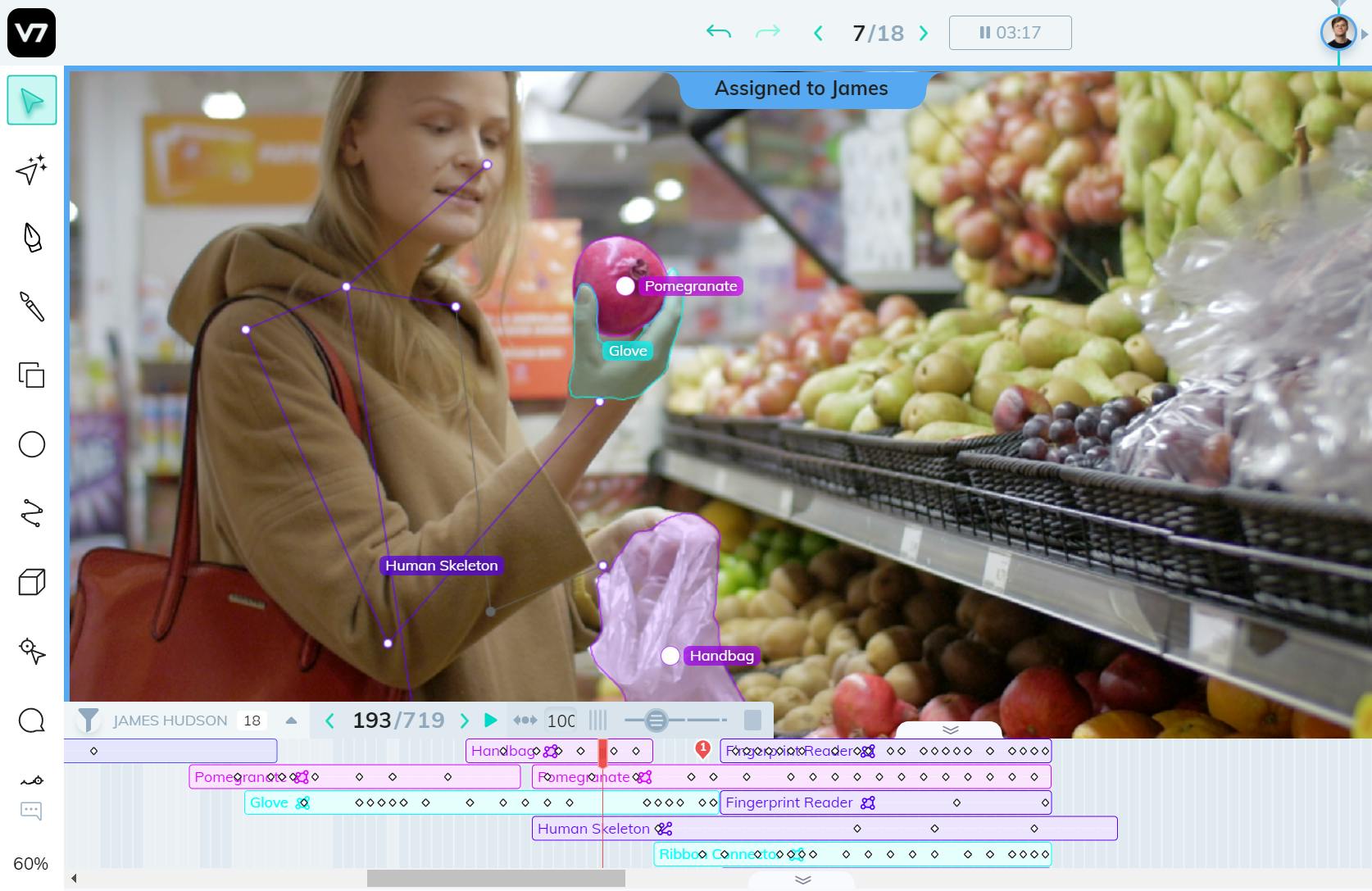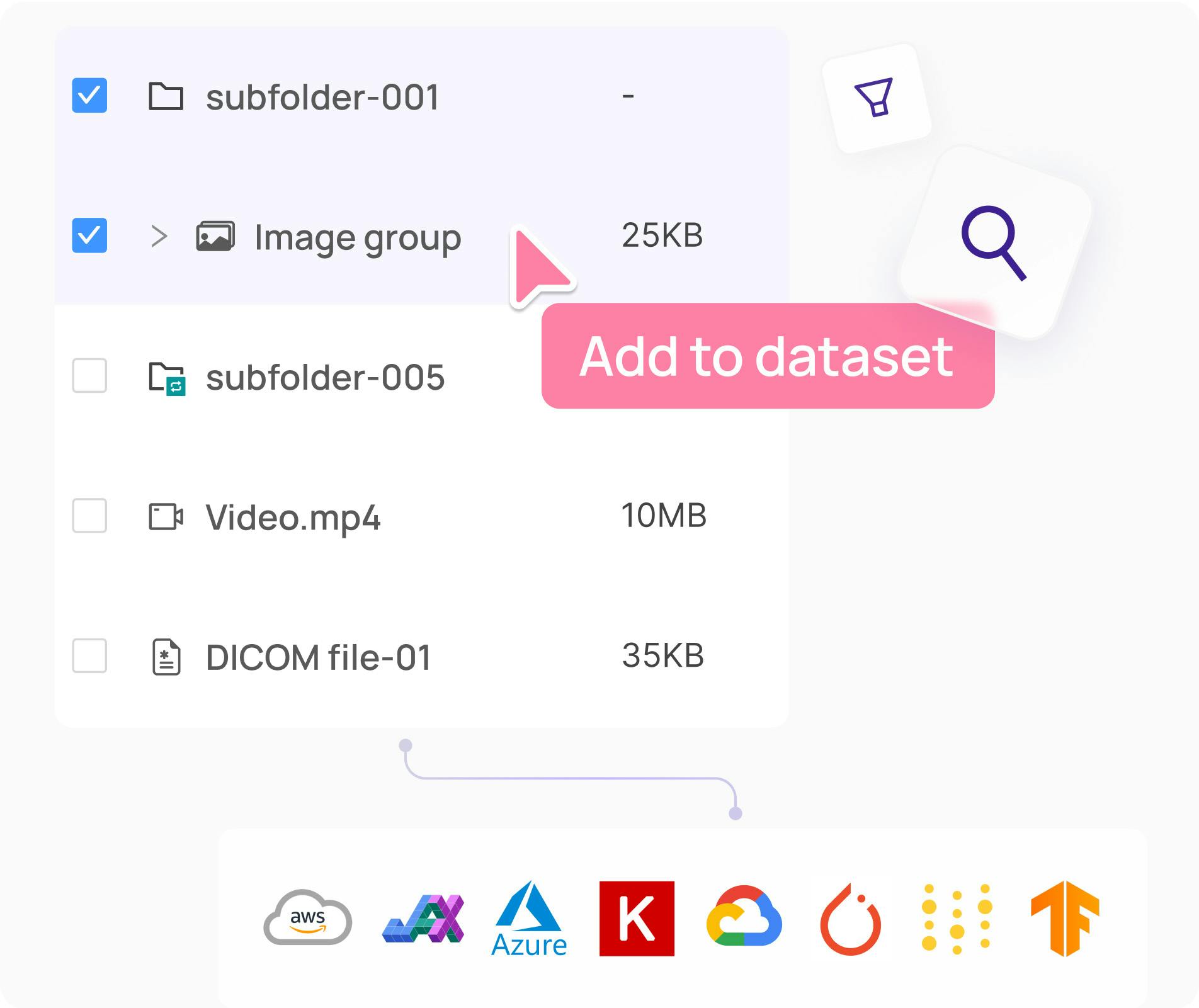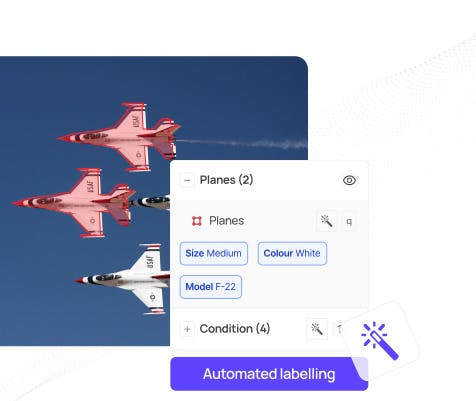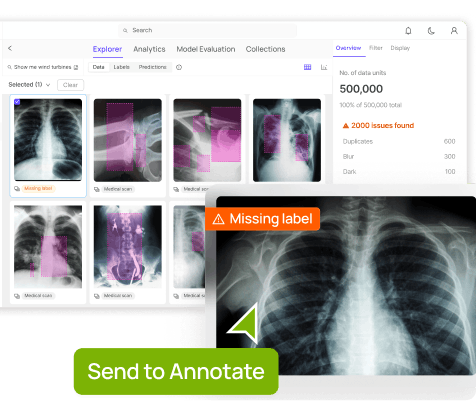Contents
Quick answer
How to choose a DICOM annotation platform
What actually makes a platform “best”
In-depth reviews
Integration patterns
Security and compliance notes
Light buyer checklist
Encord Blog
Best DICOM Annotation Platforms (2025): Radiology-Grade Tools
5 min read
Quick answer
There is no single best DICOM annotation platform. Choose Encord for enterprise, multimodal, and regulated workflows. Choose V7 (Darwin) for fast clinical computer vision on DICOM and NIfTI with auto-annotate. Choose MD.ai for radiology-native viewing and structured projects. Choose OHIF + MONAI Label for open-source, web, AI-assisted labeling. Choose 3D Slicer or ITK-SNAP for research-grade 3D segmentation. Choose Labelbox for cloud workflows with automation and SDKs. Choose AWS HealthImaging + SageMaker Ground Truth when you must stay inside AWS.
How to choose a DICOM annotation platform
Start with your modalities and formats. Confirm DICOM and NIfTI support, including multi-frame, enhanced, and secondary captures. Check for MPR, window/level presets, and 3D volume review. Validate model-in-the-loop features like auto-annotate and active learning. Require RBAC, audit trails, encryption, and SSO. Decide on SaaS, VPC, or on-prem based on PHI boundaries. Plan PACS and DICOMweb connectivity. Measure cost per kept label in a short pilot before committing.
Use this table to map needs to a dicom platform:
| Need | Pick | Why | Trade-off |
| Enterprise, regulated, multimodal | Encord | One platform for labeling, curation, and evaluation; DICOM/NIfTI; 3D views | Deeper configuration |
| Fast CV on CT/MRI | V7 (Darwin) | Auto-annotate; MPR and 3D; clinical-oriented UI | Validate soft-tissue edge cases |
| Radiology-native workflows | MD.ai | Web viewer with measurements and structured projects | Vendor-specific conventions |
| Open-source, web, AI-assist | OHIF + MONAI Label | DICOMweb; extensions; server AI assistance | More setup and DevOps ownership |
| Research-grade 3D segmentation | 3D Slicer or ITK-SNAP | Strong 3D tools; community extensions | Less turnkey governance and QA |
| Cloud ML pipelines | Labelbox | Automation; SDKs; pathology tiling | Check DICOM specifics and 3D depth |
| All-AWS environment | AHI + SageMaker Ground Truth | AWS-native storage and labeling; IAM alignment | Viewer flexibility varies; may need complements |
What actually makes a platform “best”
Model-in-the-loop improves throughput
Automation shifts effort from drawing to reviewing. Pre-labels, segmentation assists, and active learning cut cycle time when wired into CI/CD. Benchmark by pre-labeling a fixed batch and comparing review minutes per study against a manual baseline.
Quality and governance you can audit
High-stakes imaging requires measurable quality. Use consensus tiers, second reads, and spot-checks. Maintain immutable audit logs of annotations and reviewer actions. Align access controls and data flows to HIPAA and SOC 2 expectations.
Curation and evaluation in the same loop
Great platforms close the loop between data issues and model behavior. Detect drift, blind spots, and label errors before training. Target relabeling to failure modes. Track time-to-fix, disagreement rate, and cost-per-useful-label.
In-depth reviews
Encord — enterprise and regulated, end-to-end

Encord is built for end-to-end data operations across annotation, curation, and evaluation. DICOM and NIfTI sit alongside images, video, text, and documents, so multimodal teams keep one source of truth. The medical viewer supports axial, sagittal, and coronal planes with MPR and volumetric tools. Model-assisted labeling speeds contours and masks while keeping clinicians in the loop for verification. Projects support multi-stage review, consensus, and analytics for throughput and quality. Audit logs, SSO, and fine-grained roles align with enterprise governance, and HIPAA/SOC 2 options support regulated deployments. Index and data discovery help teams retrieve the right cases at scale, while SDKs and webhooks connect active learning to training pipelines. Encord excels when you need measurable throughput, governance, and evaluation in one place. Smaller teams may find the stack deeper than needed, and you should budget time for workflow design and integration.
V7 (Darwin) — speed for clinical CV with auto-annotate

V7 (Darwin) emphasizes labeling velocity without abandoning clinical context. DICOM and NIfTI uploads are straightforward, and the interface favors keyboard-first productivity. Auto-annotate accelerates boxes, polygons, and masks on CT and MRI, which is valuable for repetitive segmentation. MPR and volumetric views assist cross-plane review and lesion tracking, and project dashboards make productivity and quality trends visible. Managed workforce options are available for surge capacity. Plan clear QA policies for subtle soft-tissue boundaries, multi-phase studies, and small lesions to avoid drift. If you need deep evaluation workflows or highly customized governance, pair V7 with downstream data-ops tooling.
MD.ai — radiology-native viewer and structured projects

MD.ai delivers a web DICOM viewer designed with radiologists in mind. It manages studies, series, hanging protocols, measurements, and ROIs within clinical-style layouts, so readers stay close to familiar workflows. Project structures define cohorts, roles, and instructions with exemplar cases to reduce ambiguity. The system supports academic needs such as teaching sets and cohort curation while exporting data to research and model training formats. A 510(k)-cleared viewer is available within the product line. MD.ai is ideal for hospital radiology teams and academic centers that value reading-room ergonomics and structured review. Expect vendor-specific conventions in some workflows, and define SLAs for turnaround and discrepancy handling at scale.
OHIF + MONAI Label — open-source web viewer with AI assist

OHIF is an extensible, web-based DICOM viewer that runs in the browser and integrates with PACS via DICOMweb. It supports measurement tools, hanging protocols, MPR, and 3D rendering, and its plugin architecture lets you add site-specific extensions. Pairing OHIF with MONAI Label adds an AI server that performs inference near the data and streams overlays back to the viewer, enabling accept/edit loops that reduce data movement. This pattern keeps PHI within your boundary while giving annotators assistive suggestions. The trade-off is ownership: your team operates the stack, manages updates, and layers governance on top. OHIF+MONAI suits research hospitals and engineering-heavy teams that prioritize OSS control and customization.
3D Slicer — research-grade volumetric segmentation

3D Slicer is a mature desktop application for volumetric analysis and segmentation. It offers extensive multi-planar and 3D tools, advanced contouring, quantitative measurements, and a rich ecosystem of extensions, including deep-learning helpers and format converters. Python scripting enables repeatable pipelines and experiment tracking. Slicer shines for research groups that need precise controls, custom logic, and offline workflows. It does not provide enterprise governance, workforce management, or multi-user QA out of the box, so many teams pair Slicer with a platform that handles audit logs, access control, and project orchestration.
ITK-SNAP — focused and efficient 3D segmentation

ITK-SNAP is a focused tool for fast, expert-driven 3D segmentation on DICOM and NIfTI volumes. Its compact interface, semi-automatic snakes, and region-growing tools help specialists create accurate contours with minimal overhead. ITK-SNAP is excellent for small expert teams that value precision and low friction. Collaboration, governance, and analytics are limited compared to platforms, so consider downstream tooling for auditability and integration with training loops.
Labelbox — cloud workflows, automation, and SDKs

Labelbox provides a cloud-native data-ops stack that covers medical imagery workflows, including tiled pathology and large-image handling. Model-assisted labeling reduces time on common findings, while review systems capture consensus and escalations. SDKs and webhooks help wire active learning into training pipelines and orchestrate retraining based on error buckets. Security features align with enterprise SSO and logging. Teams should validate DICOM specifics for their scanners and consider pairing Labelbox with dedicated medical viewers if they need advanced 3D tools.
AWS HealthImaging + SageMaker Ground Truth — all-AWS boundary
AWS HealthImaging provides DICOM-aware storage and streaming with DICOMweb APIs, while SageMaker Ground Truth offers managed labeling within the same boundary. The combination keeps IAM, logging, and encryption under centralized governance and reduces egress. You can attach custom labeling UIs and workforce options to projects. Viewer depth for advanced 3D tasks may require complementing with OHIF or a platform. This setup fits organizations standardized on AWS that want minimal boundary crossings and tight integration with existing cloud controls.
Integration patterns
Use DICOMweb for connectivity to PACS and archives. Mirror clinical reading layouts to minimize context switching. Handle anonymization and re-identification as separate steps with documented approvals. Instrument export pipelines for reproducibility and schema validation. Capture model and label version provenance for every dataset release. Test round-trip integrity on multi-frame and enhanced objects. Define fallback behavior for network or PACS outages.
Security and compliance notes
Adopt least-privilege roles and enforced SSO. Keep PHI within your chosen boundary and limit egress. Log study access, label edits, and reviewer actions. Define retention and deletion schedules per policy. Encrypt at rest and in transit. Rehearse incident response with tabletop exercises. Record approvals for dataset releases and maintain vendor BAAs.
Light buyer checklist
Confirm DICOM and NIfTI coverage for your scanners. Confirm window/level controls, MPR, and 3D review. Confirm model-assist and active learning. Confirm audit trails and export provenance. Confirm DICOMweb endpoints and PACS access. Confirm VPC or on-prem options if required. Confirm SDKs, webhooks, and training-loop integration. Confirm support tiers, SLAs, and BAA needs. Confirm anonymization and re-identification steps. Confirm storage and long-term retention costs.
Explore the platform
Data infrastructure for multimodal AI
Explore product
Explore our products
- There is no universal best. But Encord matches most use cases.
- Encord is a strong pick for enterprise governance and multimodal support. Validate against your policies.
- Yes. Encord supports DICOM and NIfTI for CT, MRI, and other studies.
- Yes. Encord offers enterprise security features for HIPAA- and SOC 2–aligned programs. Confirm requirements with the vendor.
- Yes. Encord supports study/series workflows and structured review for teaching and research.


